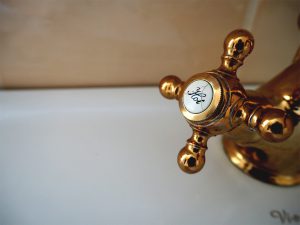

Unsplash
Suburban RV Water Heater 7 Things You Need To Know
If your motorhome came with a Suburban RV water heater or you’re looking to upgrade your current unit to a Suburban model, there are a few things you’ll want to know when making the switch. Here’s how to get started.
1 Your power source
Suburban RV water heaters have the advantage of running off of either gas or electricity. That means that when you’re on the road, you can have a perfectly hot shower by using gas power. It also means that when you’re hooked up on a 120-volt power at a campsite, you can also run the Suburban hot water heater without using your fuel. Just make sure that you make the switch on the outside of the unit to flip the switch on the control panel and make sure you’re using the correct power source.
2 Tank capacity
How many showers you can have in comfort depends a lot on the size of your hot water tank. The Suburban RV hot water heater comes in a range of tank sizes from about 4 gallons all the way up to about 16 gallons. Of course, your type of RV will dictate which tank you can use. Something to keep in mind when shopping around.
3 Porcelain lining
Chances are if you’ve run into a problem with a different type of water heater it has something to do with the metal used on the tank. Suburban water heaters use porcelain-lined steel tanks. These tanks have been pressure treated twice before they’re sold to ensure integrity. If something breaks, you’re usually covered under the Suburban three-year warranty.
4 Tank maintenance
To prolong the life of your Suburban hot water tank, you’ll want to keep up regular maintenance. To flush the tank of sediment, turn off the gas electrical and water supplies to the heater. Open both the hot and cold water faucets to relieve pressure. Remove the anode rod and let the tank drain. Don’t do this if the tank is hot. Rinse the inside of the tank with something like a standard garden hose head. Flushing the sediment will prevent buildup.
Another feature to check is the anode rod. These have a tendency to corrode over time and it is best to replace them about once a year. The parts are relatively cheap and widely available. \
5 Odor elimination
A common complaint is the smell of sulfur coming from your water source. Turn on the cold water, check the smell and see if you’re noticing anything. Do the same for the hot water. If the smell is only coming from the hot water, it’s likely coming from the hot water tank. This odor is not harmful but is easily remedied yourself with the addition of chlorine.
6 Installation
Installing Suburban RV water heaters is something you can easily do yourself. The systems are available for purchase online or at most RV dealerships. First, you’ll want to remove the current heater. Begin by disconnecting the water lines and cords from the inside of the RV. The unit will remove from the side of the RV by sliding out once disconnected. The new unit will slide back in and need to be reconnected. Most new units will need to be secured by screws and a layer of putty. The outside of the unit will be protected by a door.
7 Winterizing
If you aren’t going to use your RV in the winter, it’s best to drain the tank and water system entirely to prevent freezing. Otherwise, you’ll have to use antifreeze to continue using the water year-round. Be sure to read the full manual to winterize your system correctly and safely.
This post may contain affiliate links.






